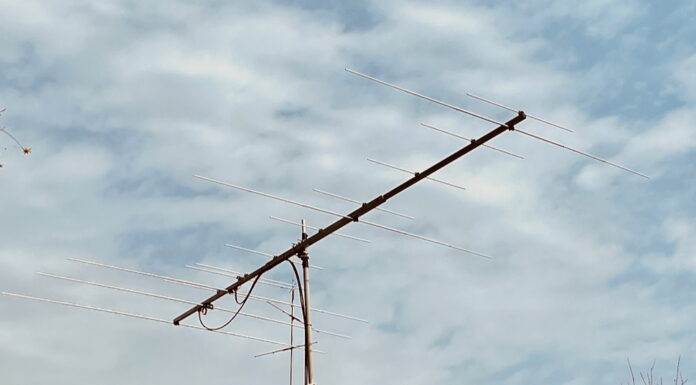You may have read my First Satellite QSO post from October. Since that time I’ve been working a few of the satellite passes. I’ve become reasonably adept working FO-29 and XW-2F with both SSB and CW, with 30 QSOs. I have not yet felt comfortable with the FM satellites, but did manage one QSO on AO-85.
Early this morning I added AL7RS to the log on FO-29 with CW. He’s located in Alaska near the Bering Strait. I’d heard him on the air before but just as the satellite was dropping below the horizon. This morning I found him as the satellite came over the horizon.
The day prior I worked XE3ARV in Mexico, also on FO-29 CW. So I now have three total countries and a couple of handfuls of grid squares.
I can tell that I need more sensitivity on the receive side of the equation. This is based on having a fair bit of difficulty understanding SSB transmissions and seldom experiencing FM with anything like quieting through the limiter.
Of course, adding elevation to the antennas would help, plus adding more boom length and elements. The antenna size is limited in my side yard. Plus, elevation isn’t in my future there either. That leaves something that could help both my satellite station and my weak signal work – preamplifiers.
I’ve looked at a number of possibilities from high cost to low. But it’s starting to look like the Mirage preamps might be the way that I go. Chiefly, I need some simple method of getting them out of the line when I transmit. Since I don’t intend to go above 100 watts on 2 m and 70 cm, the Mirage units will take care of that.
Actually, I’d love to get hold of the Icom preamps that were meant for the IC-910H, but they are no longer sold new and not readily found on eBay, etc. So, it looks like the Mirage units might be the answer. I’ve got time to search for a few more options as I won’t be doing anything until 2016.
If I worked you on the satellites, thanks for your QSO. If you called and I didn’t hear you, now you know why.









For working satellites with fixed-elevation antennas, adding boom length and elements is not your best approach for one simple reason: beamwidth. As you increase gain, the beamwidth normally decreases, taking away any grace you might have been afforded with a broader, less gain antenna.
Increasing gain by adding elements can help you work stations at the horizon when the opportunity for DX is greater however you’ll sacrifice access to higher elevation passes. It’s a trade off: Horizon DX vs USA coverage, higher elevation passes. That’s why a lot of stations take a balanced approach – 3-5 element 2m & 5-9 element 70cm yagis – with a fixed elevation somewhere around 15 degrees above your lowest desired/workable horizon. For example, if you live in a metro area, you might want to add 5+15 and set the fixed elevation to somewhere around 20 degrees. I probably wouldn’t recommend ever going over 30 degrees fixed elevation because you want more of your gain at the lower elevations (again, for DX.)
The Icom preamps are not anything special when you consider all Gasfet-based preamps are nearly the same characteristics. Some, like SSB, do employ helical filters. However, for the most part all Gasfet preamps are going to be very similar in noise and gain figures. The differences might be in power handling for the internal relays, VOX sensing, and mechanical construction. Several companies offer preamps that can be powered via coax and compatible with your IC-910H.
Increasing power will certainly not increase your odds of making contacts on satellites. Improving the reception capabilities is a far better proposition.
Great blog post!
Hi Clayton,
Thanks so much for your comments, insight, and keeping up with my blog posts.
All the antenna thoughts make sense to me. I have an Elecraft 6 meter pre-amp in place for my K3 that has made a big difference on the Magic Band, particularly with meteor scatter contacts. Appreciate your insight into the 2m/70cm preamps. That’s my next step.
73, Jim, K5ND